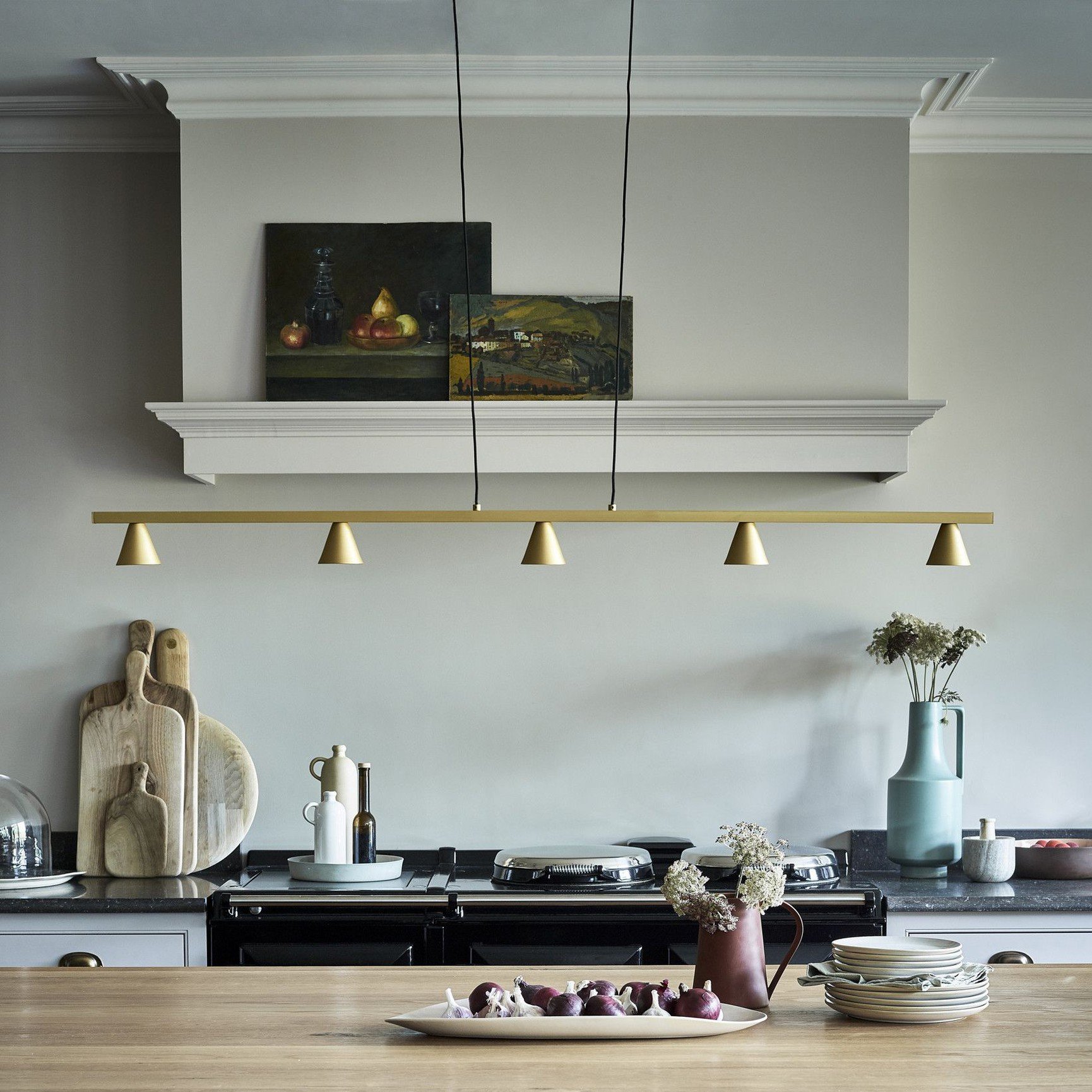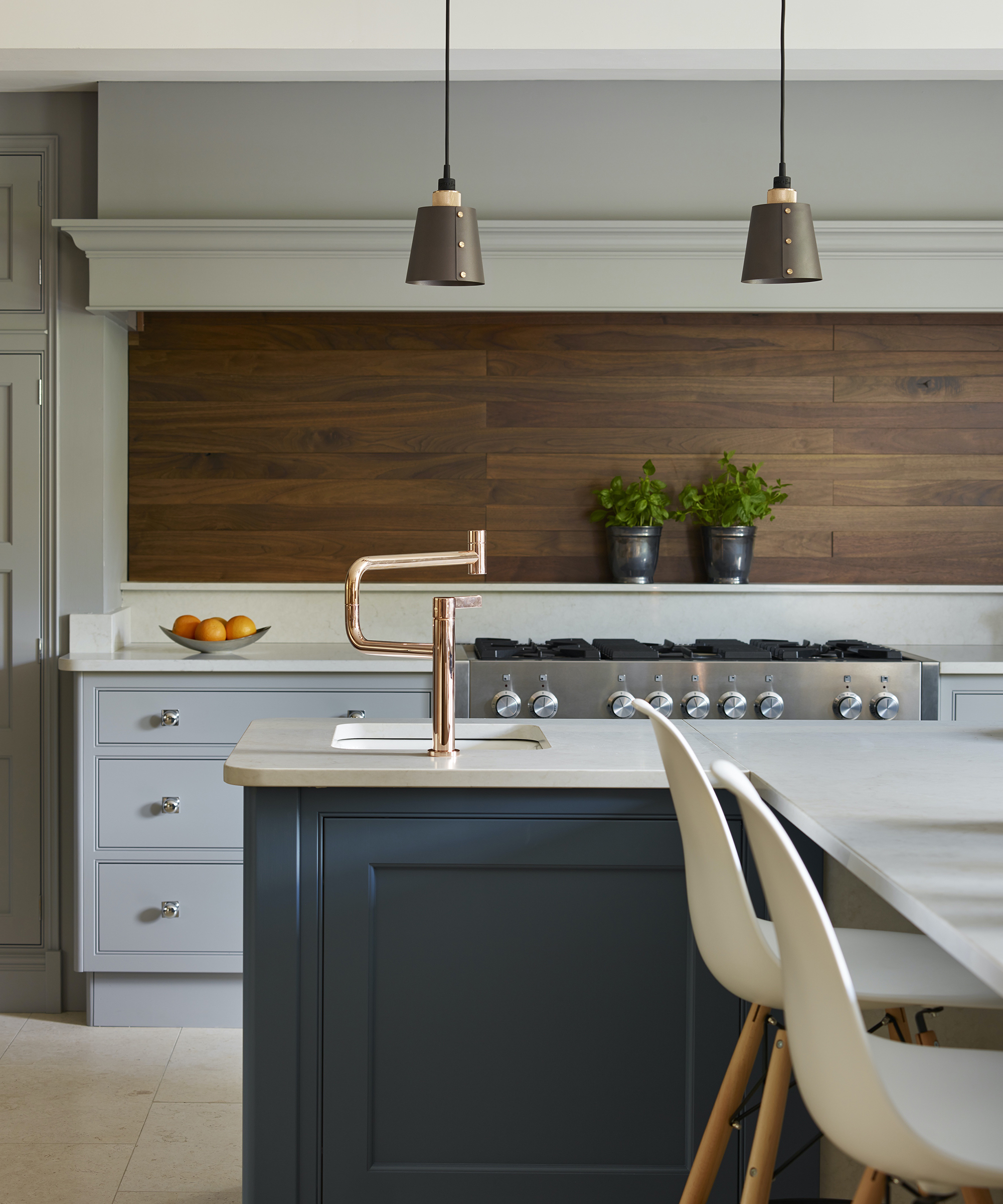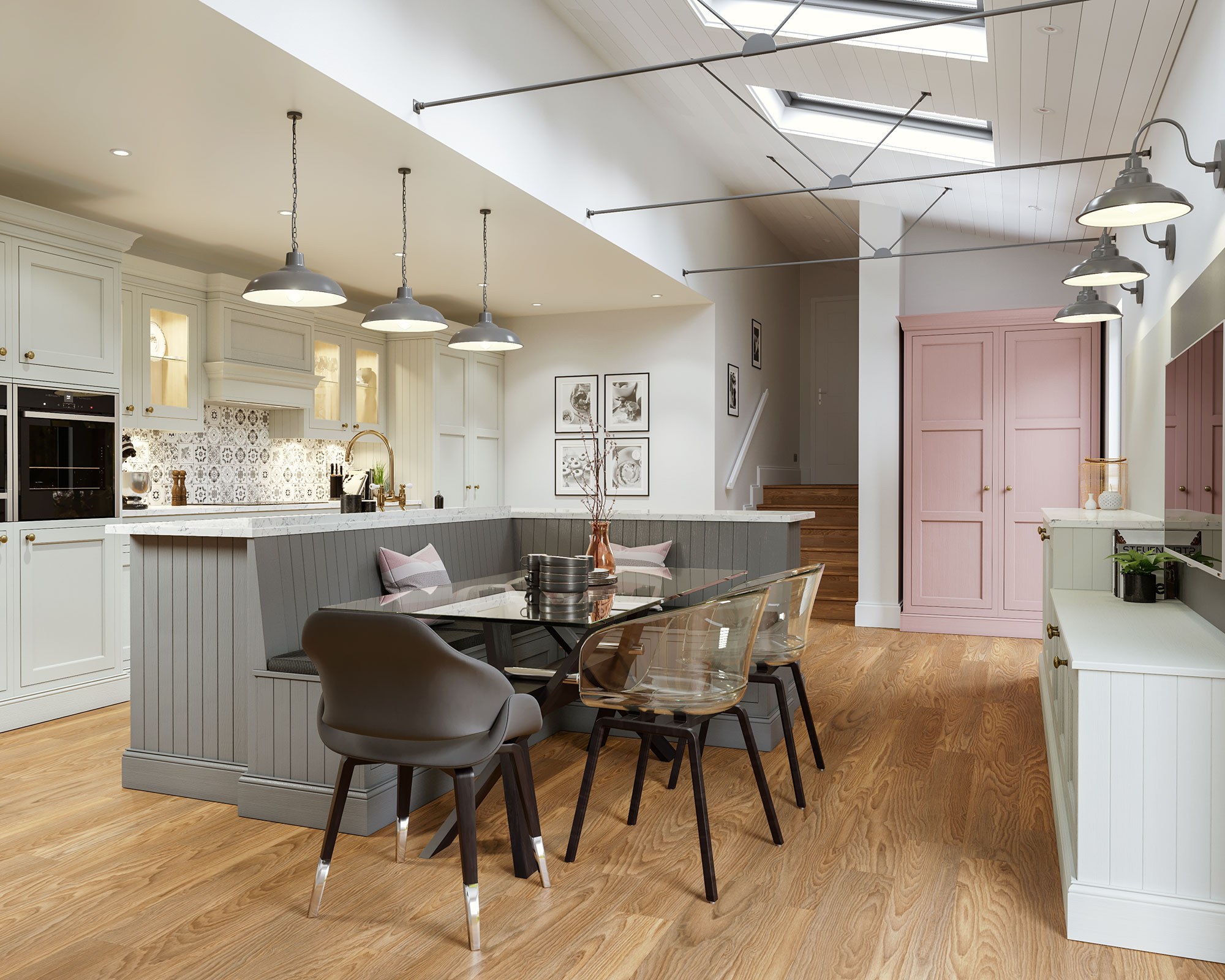The 5 secrets you need to choose kitchen island pendants successfully – revealed by lighting experts
Get this important design element spot on


Choosing pendants for a kitchen island is an exacting task. They need to provide the illumination required for safe and accurate prepping and cooking, as well as create the right atmosphere for relaxed dining.
It’s a dual role that’s particularly critical for a kitchen island that’s used as both preparation space, and dining area – and that's just the practicalities. The aesthetics are a whole other story. So, we've asked some top lighting experts to give us the key tricks to picking island pendants successfully.
Read on to discover the solutions.
See: Kitchen island lighting ideas – how to light up this prime spot

Pendant lights above an island will transform the space, as Chris Jordan, Managing Director at Christopher Wray explains, ‘A series of pendants can add a touch of style to a typically very functional room.’ They will prove a pull, too. ‘People tend to gravitate around an island as it is usually in the center of the kitchen and therefore naturally a sociable area,’ says Chris.
It's worth noting that kitchen island pendants can perform a neat visual trick in large kitchens with tall ceilings, too. 'In a kitchen with high ceilings, look at visually lowering the sense of scale by adding low hanging pendants over the island. This can also help delineate the space in an open plan kitchen,' say the experts at John Cullen Lighting, who also suggest adding downlights in between the pendants to ensure that you have good task lighting on the work surface below.
But if pendant lights are to function as task lights for food preparation and create the right ambience for dining, three factors are crucial.
Sign up to the Homes & Gardens newsletter
Design expertise in your inbox – from inspiring decorating ideas and beautiful celebrity homes to practical gardening advice and shopping round-ups.
The first is the height of the pendants, which should be determined individually. ‘You’ll need to ensure that they don’t completely obstruct views across the kitchen, pose a hazard for taller people or shine directly into your eyes when working or sitting at the island,’ says Chris.
‘On the other hand, they can provide the perfect amount of lighting if you are dining or working at the island if hung at the right level.’
If you are looking for a more exact formula, the experts at Pooky advise that 'pendant lights should hang around 30-36 inches from the top of a kitchen island, and should be spaced around two feet apart.

The second critical element is the size of the pendants. ‘You'll want to ensure the collection of hanging pendants is in proportion to the size of the room,’ advises Chris Jordan. ‘If the fixtures appear too small, they may get lost; if they’re too big, it can overwhelm the room.’
‘A simple solution to establish whether it will be the ideal option for your space is to add the dimensions of the room in feet and convert the results into inches. This should equal the diameter of the lighting fixtures collectively and spaced evenly, and therefore will ensure that it suits the space functionally and aesthetically.’

The third element to consider is the number of the pendants. 'Using odd numbers can create a balanced look,' say the experts at Pooky. 'Pendants look fabulous placed over an island in clusters or rows of three or five.'
The fourth element to consider is the controllability of the pendants. This may mean pendant fittings that can be raised and lowered to suit your mood, but more practical is controllability of the lights' temperature.
'I would suggest dimmer switches,' says Chris Jordan, 'As they are very practical and you can regulate your lighting to your exact requirement. For example, if you’re looking to create a relaxing dining atmosphere at night, you can make it softer to enhance the mood, or use full brightness when required for prep.'
And the fifth element? The warmth of the light – and this is something that can be affected by both the color of the shades on the pendants and the temperature of the light the bulbs emit. And, as Chris Jordan concludes, 'a warm light is right in such a scheme.'

Sarah is a freelance journalist and editor. Previously executive editor of Ideal Home, she’s specialized in interiors, property and gardens for over 20 years, and covers interior design, house design, gardens, and cleaning and organizing a home for Homes & Gardens. She’s written for websites, including Houzz, Channel 4’s flagship website, 4Homes, and Future’s T3; national newspapers, including The Guardian; and magazines including Future’s Country Homes & Interiors, Homebuilding & Renovating, Period Living, and Style at Home, as well as House Beautiful, Good Homes, Grand Designs, Homes & Antiques, LandLove and The English Home among others. It’s no big surprise that she likes to put what she writes about into practice, and is a serial house renovator.
-
 Kevin Bacon and Kyra Sedgwick's rustic kitchen island is stunning, but controversial – designers say you can get the look without the hassle
Kevin Bacon and Kyra Sedgwick's rustic kitchen island is stunning, but controversial – designers say you can get the look without the hassleA popular material finds an unorthodox home in the couple's kitchen, but experts disagree on whether it should be used – here's how to do it instead
By Sophie Edwards
-
 How to grow grapefruit for homegrown sweet and tangy, highly nutritious harvests – a fruit tree expert shares their planting and care tips
How to grow grapefruit for homegrown sweet and tangy, highly nutritious harvests – a fruit tree expert shares their planting and care tipsFrom planting to harvesting, this is all you need to know about grapefruit trees
By Drew Swainston